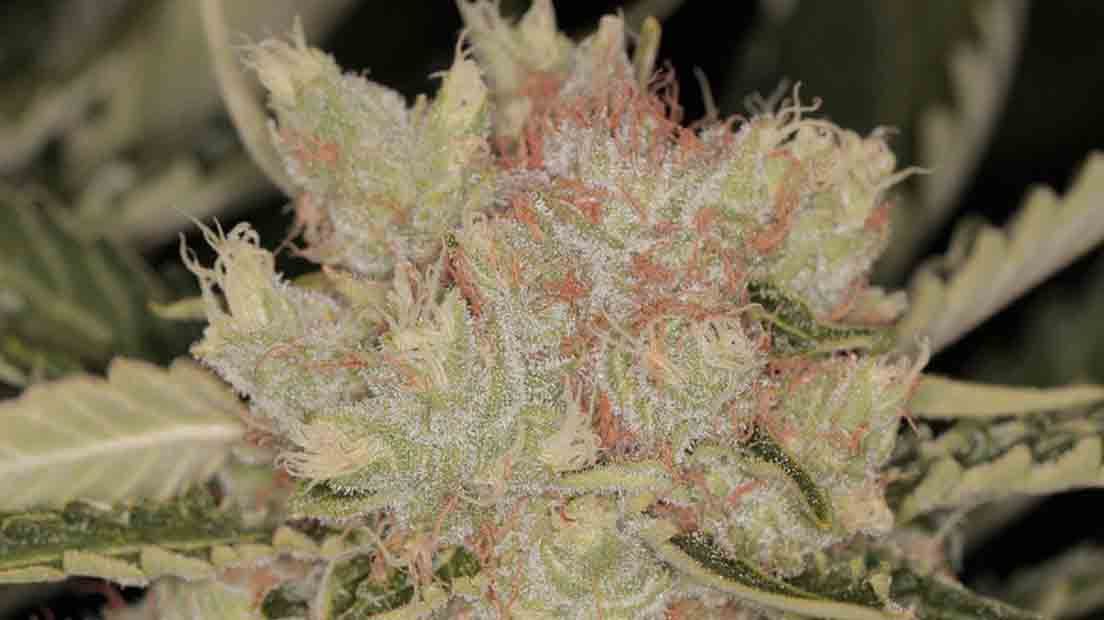
This article will deal with a current topic such as the new cannabinoids.Through a series of points, it will try to provide as much information as possible about the new cannabinoids that can be found naturally in the Cannabis plant and those that can be produced in the laboratory.
For this, scientific studies and research will be used to shed light on this issue that sparks so much interest among blog readers. First of all, it will explain what synthetic cannabinoids consist of, to continue with sesqui cannabinoids and the new phytocannabinoids discovered today.
New Cannabinoids What are synthetic cannabinoids?
The synthetic cannabinoids are a diverse group of chemicals that were created by scientific equipment in order to better understand the present endocannabinoid system in humans and animals. In the same way, these compounds were also developed in order to shed light on the possible medical uses of the Cannabis Sativa plant.
Synthetic cannabinoids work by mimicking phytocannabinoids that can be found in plants like Cannabis. In this way, many of them act by mimicking delta-9-tetrahydrocannabinol, the psychoactive cannabinoid in Cannabis, in order to faithfully reproduce the sensations that the compounds in marijuana plants can produce.
However, it is important to note that synthetic cannabinoids produced in a laboratory are not the same as cannabinoids from a Cannabis plant (phytocannabinoids), since a marijuana plant is produced in a natural environment while these synthetic cannabinoids are produced in a laboratory. It seems like an obvious fact, but it is important to emphasize this difference.
When a scientific laboratory decides to reproduce a marijuana compound by creating a new synthetic cannabinoid, it may decide to reproduce a more potent version of that compound. In other words, synthetic cannabinoids most of the time have more marked properties, since they also have the properties of binding to the receptors of the human endocannabinoid system more effectively. The endocannabinoid system is made up of a group of endogenous cannabinoid receptors located in the brain ( and has recently been discovered in every cell of the human or animal body, perhaps also in plants! ) That regulate essential life functions by interacting with synthetic cannabinoids or natural.
The new laboratory cannabinoids can also unblock other receptors of the endocannabinoid system beyond CB-1 and CB-2, which are what are traditionally related to Cannabis phytocannabinoids. For this reason, experts affirm that the effect of the new synthetic cannabinoids can affect the body differently than phytocannabinoids, also depending on the route of their administration.
Synthetic cannabinoids and secrecy
There are unregulated organizations that have also been interested in the synthetic reproduction of new cannabinoids. It is a type of illegal action whose objective is to provide psychoactive material with low guarantees to consumers of recreational substances. Mafias and organizations have detected that they can use the labels of “legality” and “security” at their service to provide false guarantees to their users and put their fraudulent products up for sale.
There is talk of products that are recognizable on the market by names such as Spice or synthetic marijuana , which are produced by dissolving the new synthetic cannabinoids in substances such as ethanol and subsequently sprayed on dried leaves to be consumed in the form of a cigarette. It is necessary to be very careful with this type of product that is usually marketed as incense or aromatic herb.
These products have not passed any control that guarantees their composition, so that inside these bags of “aromatic herbs” it is possible to find everything. Depending on the intention of the manufacturer, it is possible to find several types of new synthetic cannabinoids without having any type of recipe or composition of the product, it may also be common for Spice to be mixed with chemical substances such as mephedrone to increase the psychoactive capacity of the itself, which can be extremely detrimental to the consumer’s health.
During the last decade, experts and the media claim that the consumption of this type of clandestine synthetic cannabinoid has skyrocketed . Criminal organizations take advantage of the unlawful status of these compounds to produce cheap and unsecured merchandise, which also enjoys a certain “natural” status among consumers. These rarely know what is really supplied under the nickname of synthetic marijuana or Spice.
The increasing cases of poisoning derived from the use of Spice have set off alarms in public health organizations and thanks to this, this type of substances has become part of the list of prohibited substances. However, the speed with which cannabinoids of questionable quality can be synthesized, favors the constant introduction of new varieties of this type of substances, which is why legislative measures are often insufficient to end the spread of synthetic marijuana .
What are Sesqui cannabinoids?
At the end of 2020, a new piece of news revolutionized the world of cannabinoids: the discovery of the sesqui cannabinoids. It is a new group of cannabinoids found by BioMedican laboratories and that may have properties, although still unknown.
BioMedican is a scientific platform dedicated to biosynthesis focused on therapeutic expertise. The company’s headquarters are in Freemont, California, from where they produce pharmaceutical grade compounds. The current focus of these laboratories is on the production of cannabinoids for the treatment of pain, anxiety, obesity, brain disorders, among other important problems.
The new sesqui cannabinoids come from the biosynthesization of compounds in the Cannabis plant and have not yet been widely studied by the community due to their recent discovery. However, there is evidence, and there are scientists who support it, that the sesqui CBG, sesqui CBDA or sesqui CBGA have been biosynthesized in Cannabis plants.
BioMedican has filed the research patent last December 2020, so it is too early to talk about the possible effects that this new group of cannabinoids could have on the body by interacting with the receptors of the endocannabinoid system.
These labs are already licensed to produce Sesqui CBG and begin investigating the potential capabilities of these compounds. In the same way that BioMedican already has a license to produce Sesqui CBD, sesqui CBN, sesqui THCV and Sesqui THCA.
In the words of the BioMedican CEO himself, “This is a significant new discovery. We are the only company in the world that has discovered how to produce these sesqui-cannabinoids and has filed a patent on them. This has the potential to be the next generation of new active cannabinoids. All of our Sesqui-Cannabinoids will have a significant amount of the attributes found in CBD, CBG, THCV and THCA, but they will also have a few different attributes that could potentially make them significantly better.
The research and time will be responsible for determining the role of these sesqui cannabinoids. Surely, when the studies on these compounds are completed, more will be learned about the effects they have on people and the way they interact with the endocannabinoid system.
New phytocannabinoids
Within the new cannabinoids there is also a place for phytocannabinoids. Phytocannabinoids are those compounds that are found naturally in plants such as marijuana. These are compounds that can cause different effects in people and animals, since they interact with the endocannabinoid system, regulating certain actions in the body.
The most popular phytocannabinoids are THC and CBD. The first of them can produce psychoactive effects in people, which is why it has traditionally been used for therapeutic and recreational purposes. CBD, on the other hand, hardly has psychoactive effects, while it does have physical properties, as scientific studies show.
To these phytocannabinoids, we must add new phytocannabinoids that have been discovered more recently, since THC and CBD have been synthesized by visionaries like Professor Mechoulam many years ago. Some of the newer phytocannabinoids discovered more recently are THCV, CBN, and CBG, among others. To learn more about each of them, it is possible to read the monographic articles that were dedicated to each of these in the previous links. However, a brief contextualization of each will be provided below.
The THCV is a new cannabinoid that is gaining much prominence today and there are seed banks that have varieties of this cannabinoid percentages. This is the case with THCV Victory from Dutch Passion. Some of the properties attributed to THCV is that it acts as an appetite suppressant. Unlike THC, THCV may not produce appetite.
THCV can help alleviate diabetes. Research is promising regarding THCV’s ability to regulate blood sugar levels and reduce insulin resistance. Likewise, there are also studies that claim that THC can reduce panic attacks and seems to slow down anxiety attacks in patients with PTSD without suppressing the sensation.
On the other hand, CBN is a new non-toxic cannabinoid present in plants better known as the cannabinoid that is generated when THC ages. For that reason, it is usually present in large quantities in older cannabis. While this can be a disadvantage for many THC followers, others seek out the older cannabis just to enjoy the effects of CBN.
A 2011 study, published in the British Journal of Pharmacology, found that the combination of THC and CBN has the ability to produce more sedating sensations. It is said that older cannabis products or those exposed to a lot of heat and sunlight, such as Cannabis resins obtained in Morocco, may have higher CBN content.
Finally, CBG is a new phytocannabinoid that, unlike CBD, has a relatively low affinity for cannabinoid receptors and acts primarily through indirect interactions with the endocannabinoid system. CBG is believed to elicit its effects directly through interaction with the cannabinoid receptors CB1 and CB2 in the brain.
Finally, it is necessary to mention the recent discovery of the new cannabinoids THCP and CBDP, recently discovered by a team of Italian researchers. To find out everything about this promising discovery, we invite you to read the article in which we break down what is known so far about these two new cannabinoids.
This has been the whole review of the new cannabinoids that can be found today. To continue with interesting readings: Story of Lawrence Ringo, one of the fathers of CBD and Interview with Mahmoud Hanachi | Behind the bud.








